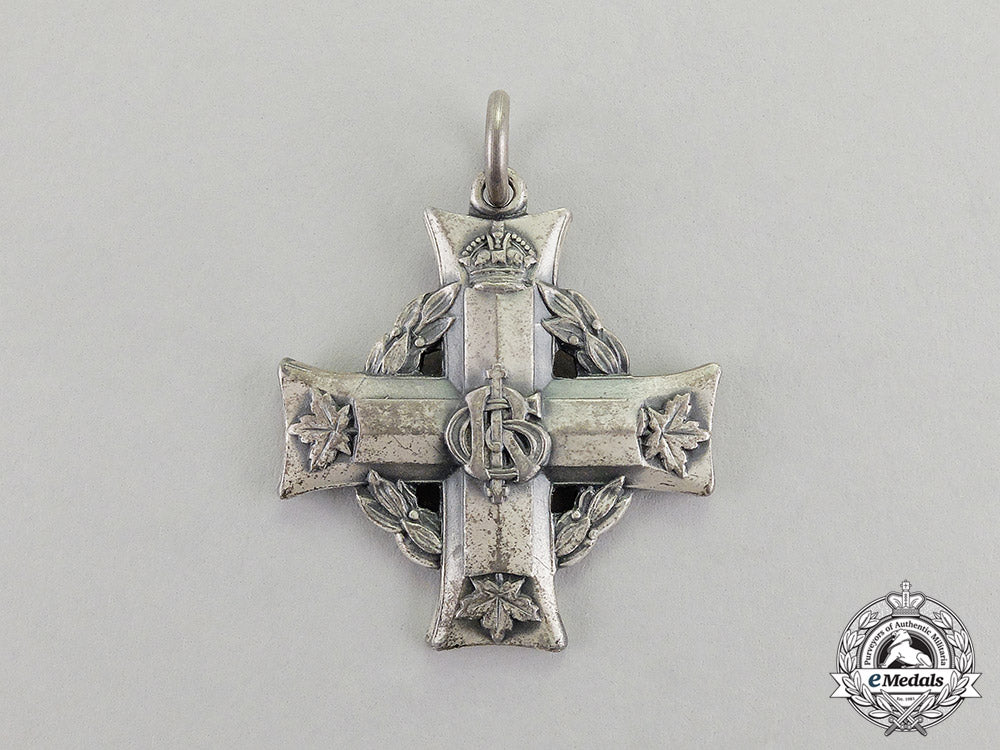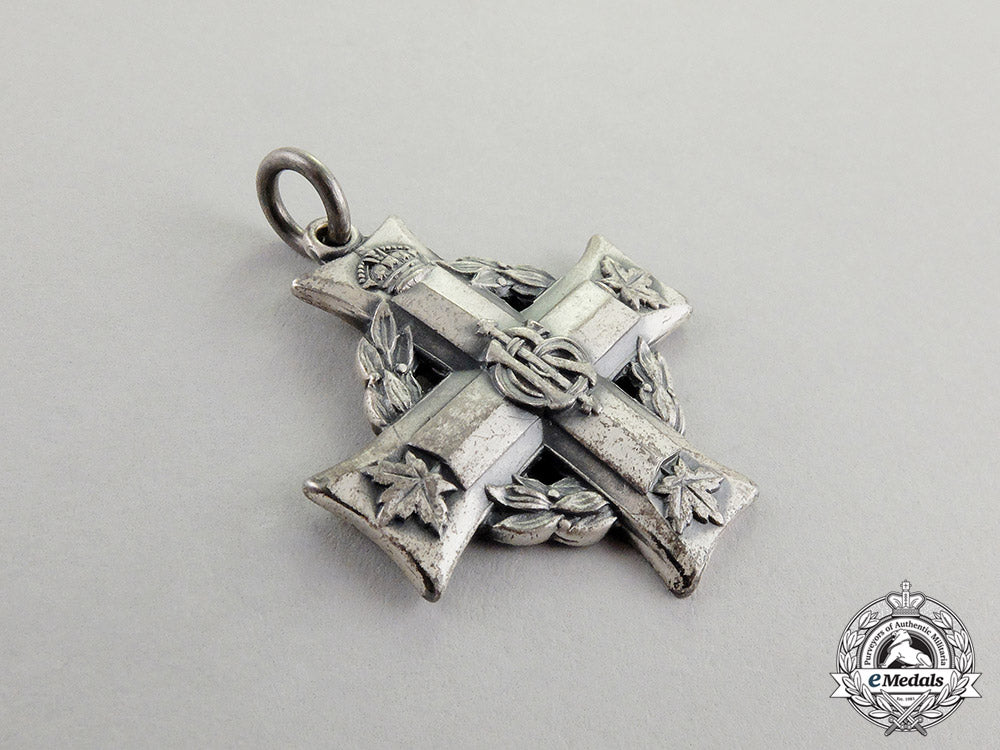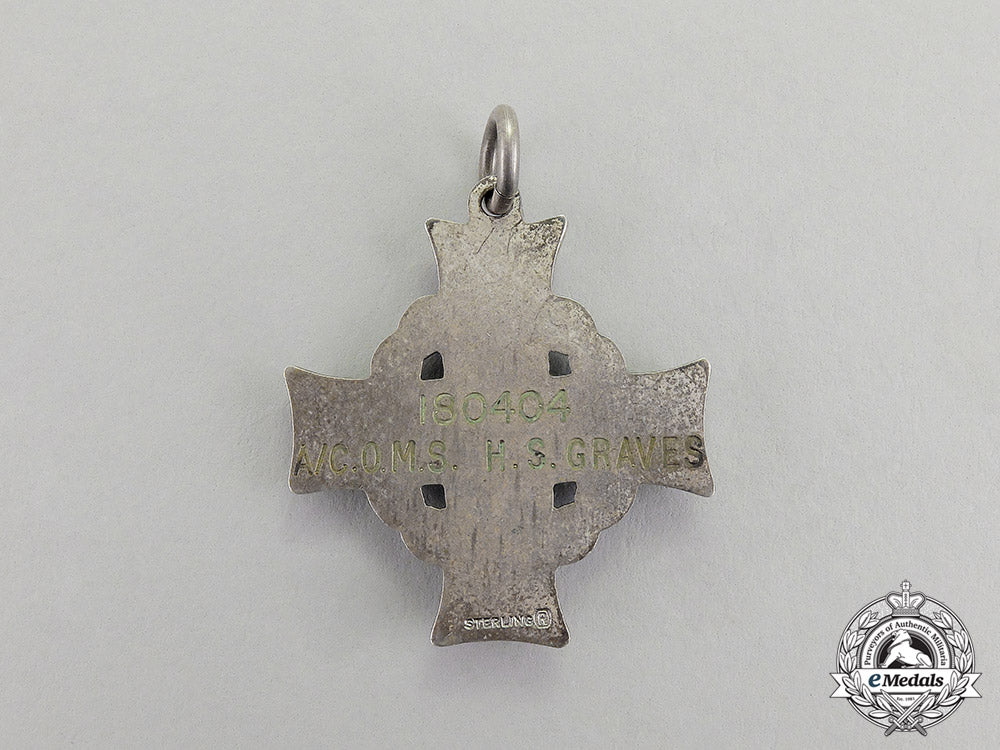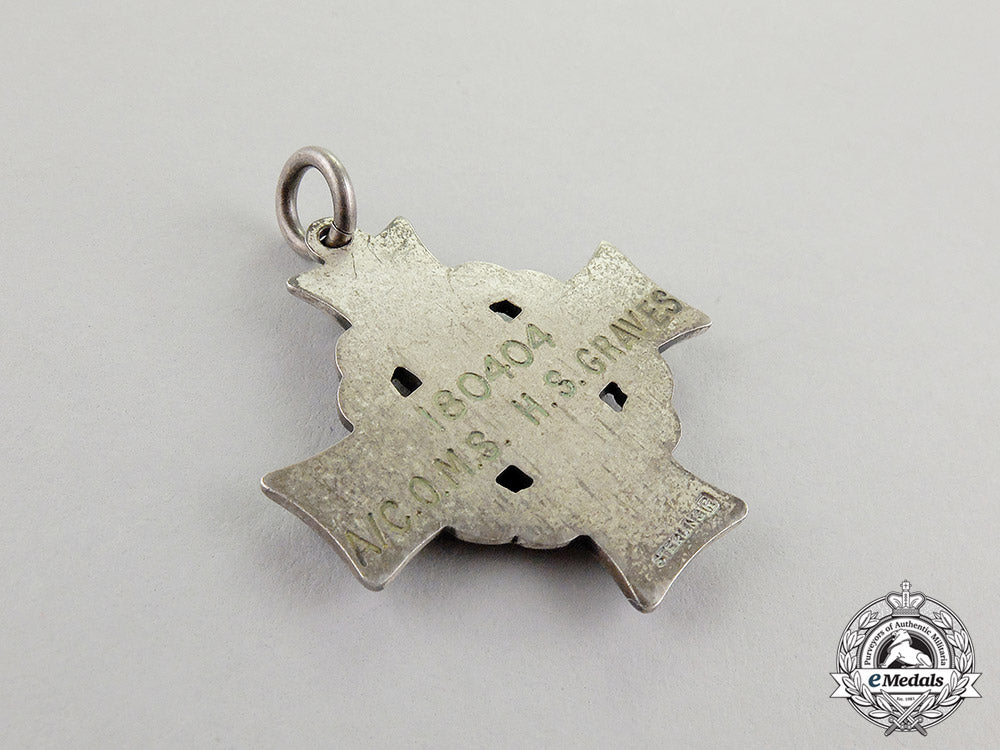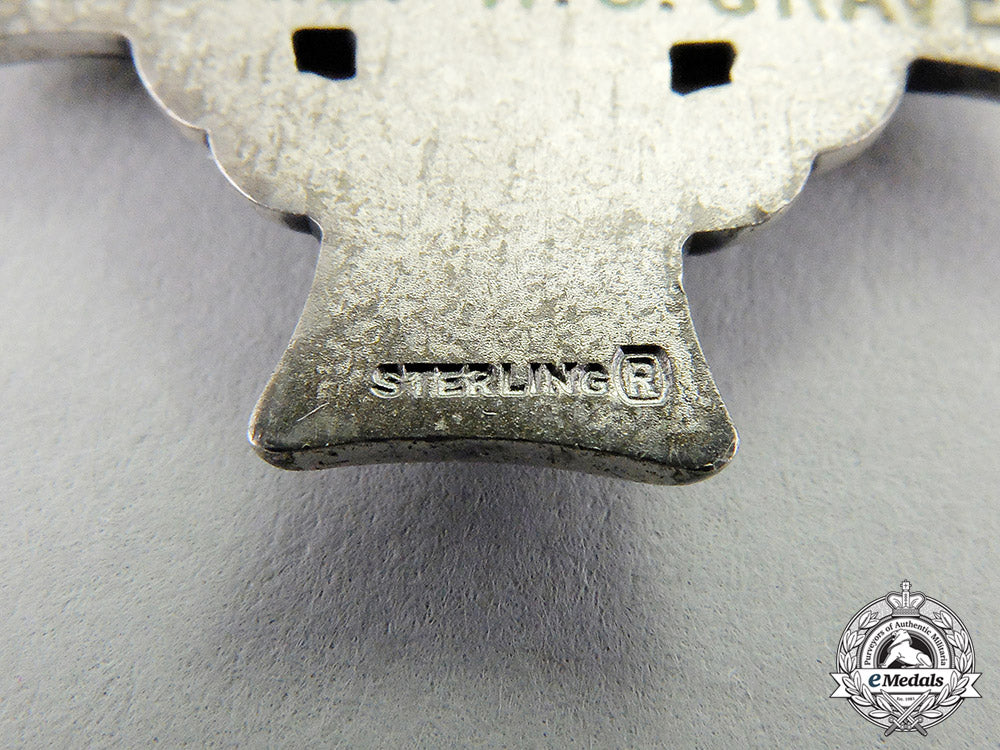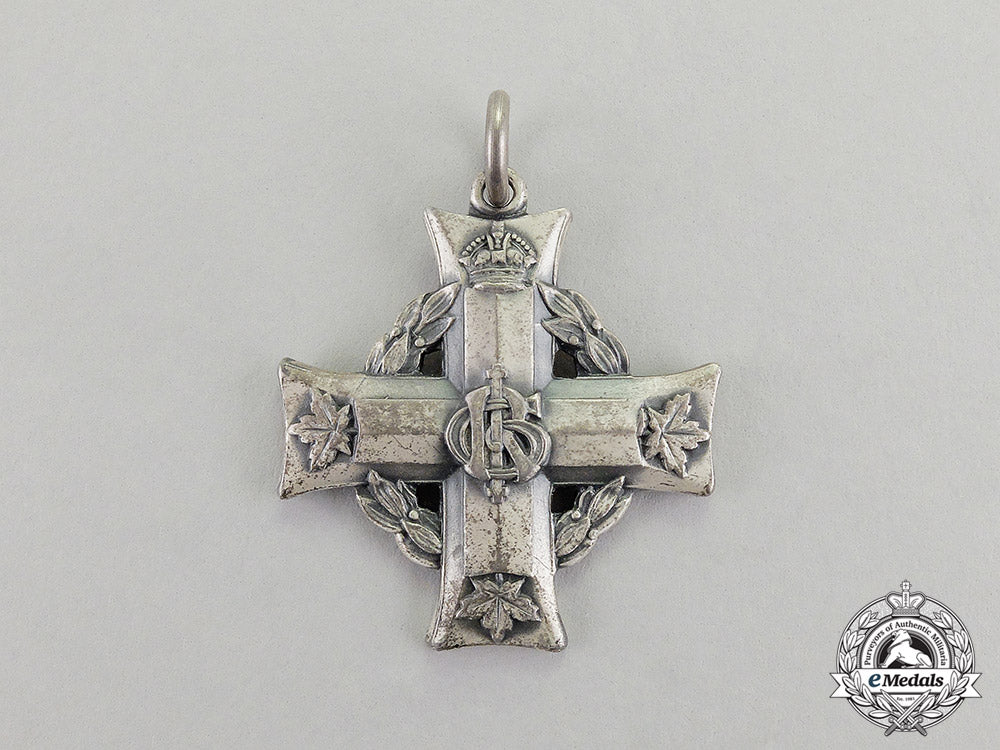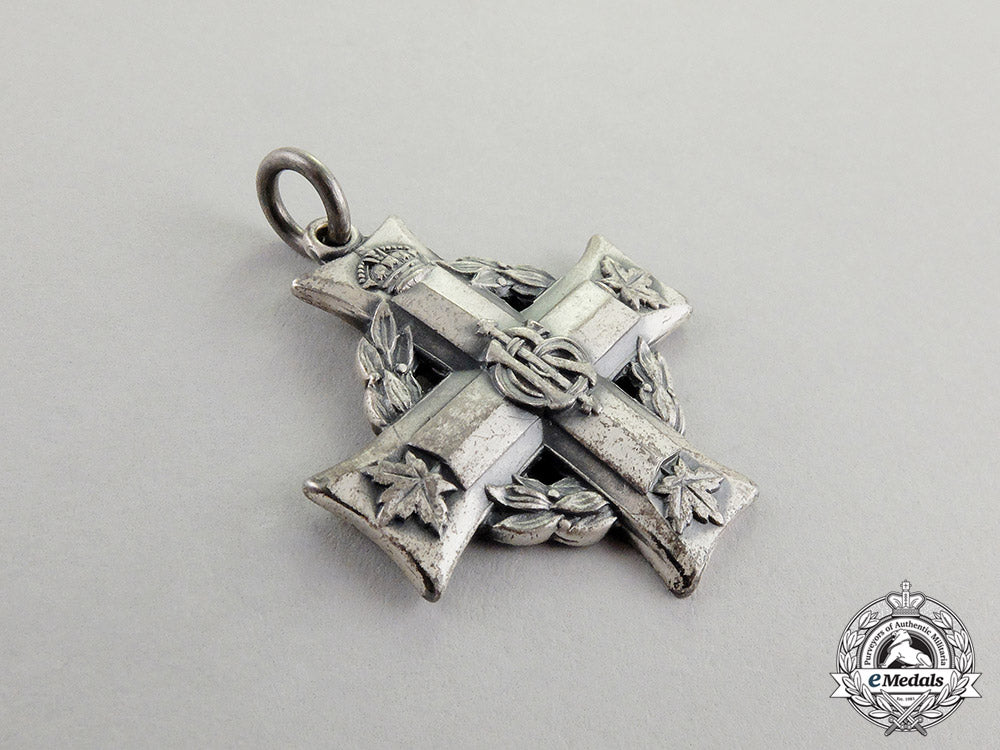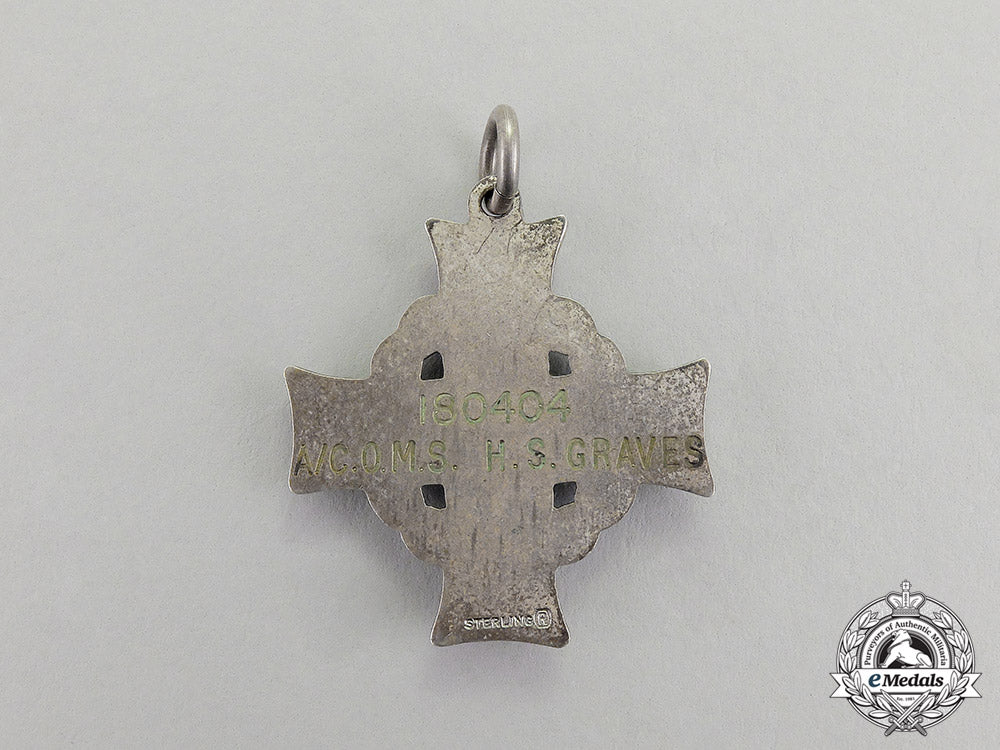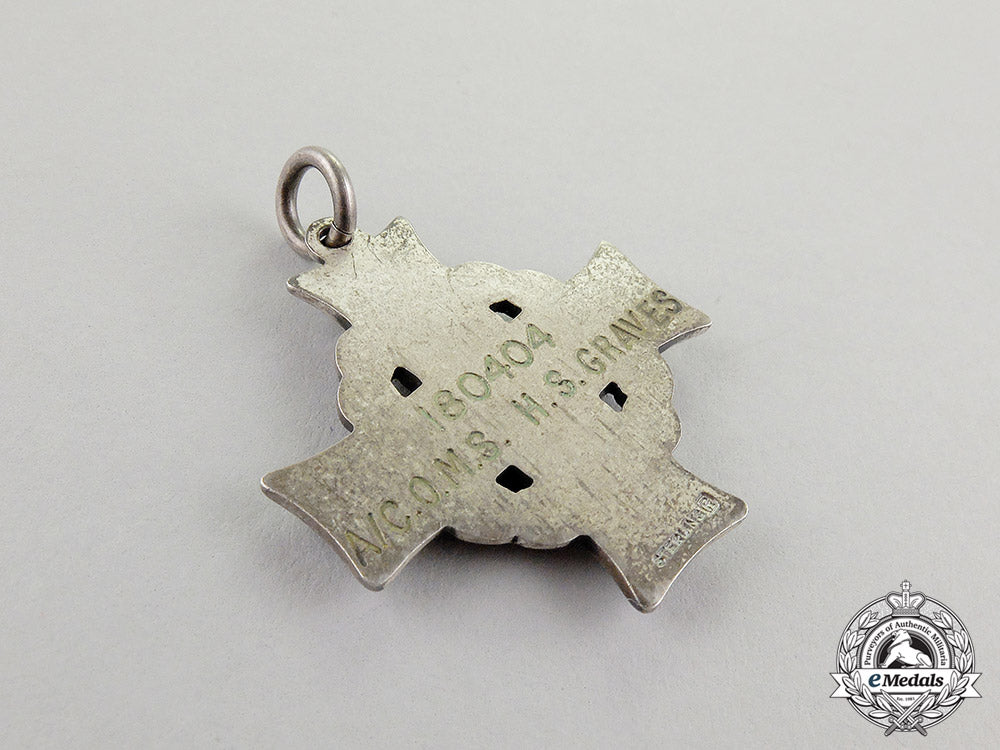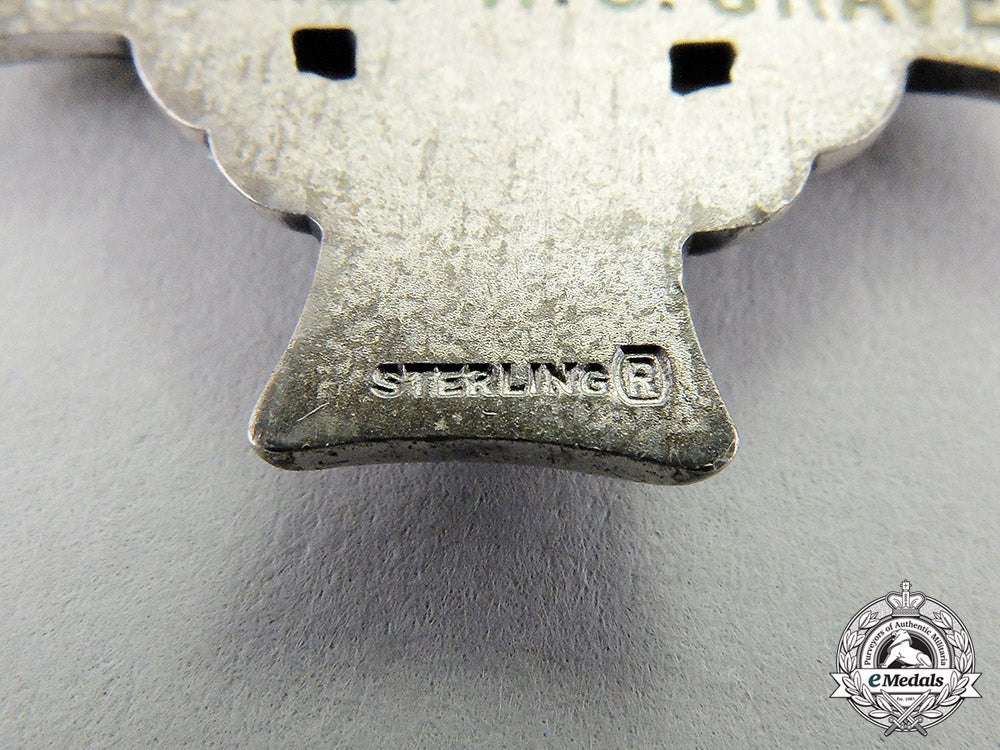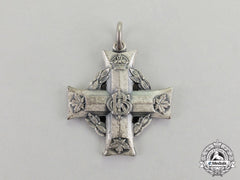
LOADING ...
In response to evolving domestic opinion, eMedals Inc has made the conscious decision to remove the presentation of German Third Reich historical artifacts from our online catalogue. For three decades, eMedals Inc has made an effort to preserve history in all its forms. As historians and researchers, we have managed sensitive articles and materials with the greatest of care and respect for their past and present social context. We acknowledge the growing sentiments put forth by the Canadian public and have taken proactive actions to address this opinion.
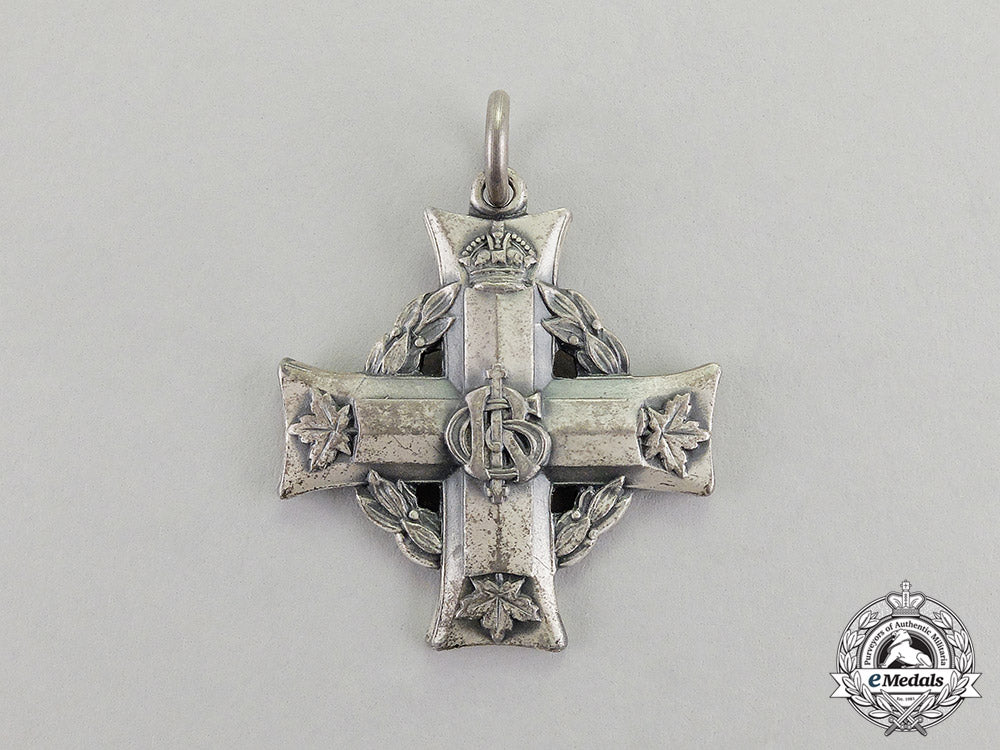
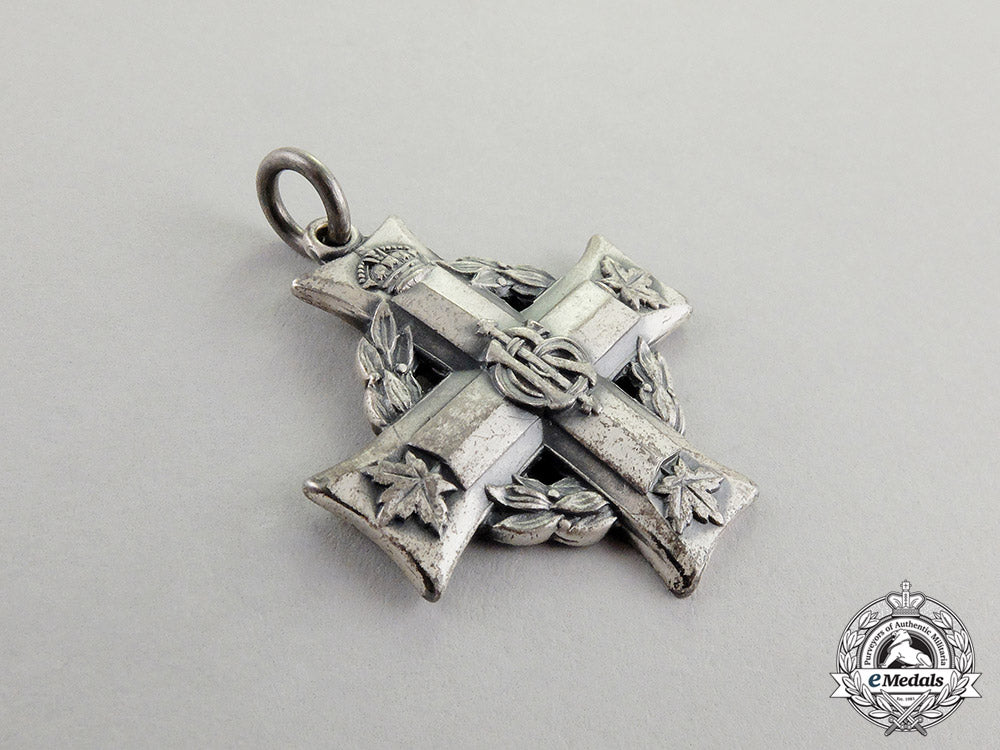

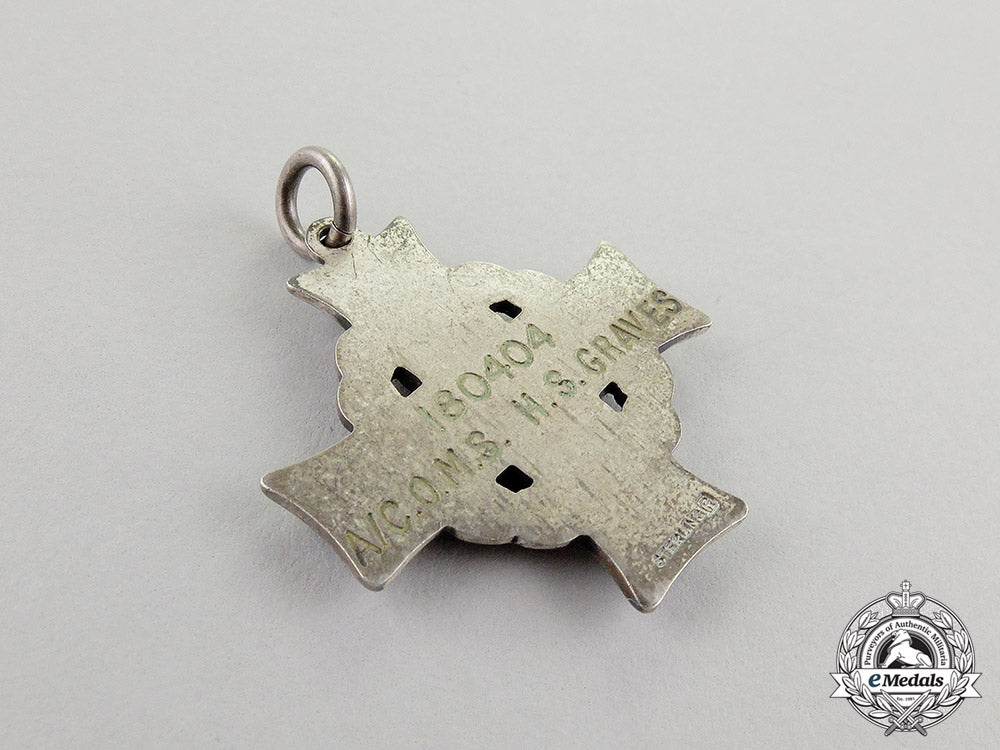
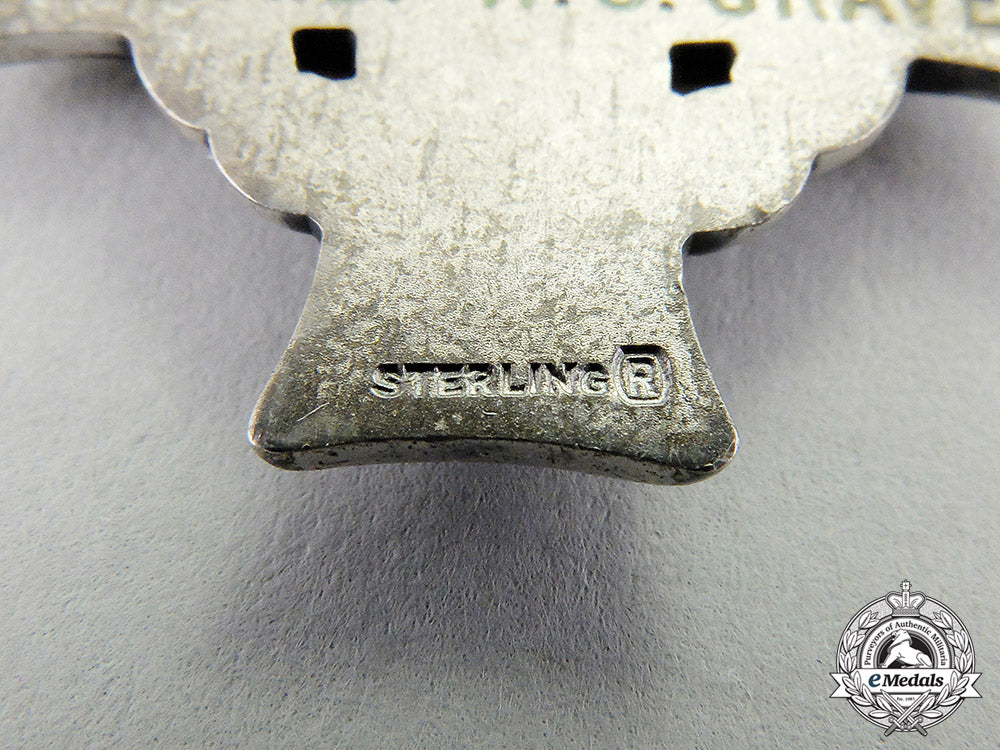
Canada. A Memorial Cross, To Acting Company Quartermaster Sergeant Graves, 4Th Canadian Pioneer Battalion
Canada. A Memorial Cross, To Acting Company Quartermaster Sergeant Graves, 4Th Canadian Pioneer Battalion
SKU: ITEM: C5031
Current Bid:
Your Max Bid:
Bid History:
Time Remaining:
Couldn't load pickup availability
Shipping Details
Shipping Details
eMedals offers rapid domestic and international shipping. Orders received prior to 12:00pm (EST) will be shipped on the same business day.* Orders placed on Canadian Federal holidays will be dispatched the subsequent business day. Courier tracking numbers are provided for all shipments. All items purchased from eMedals can be returned for a full monetary refund or merchandise credit, providing the criteria presented in our Terms & Conditions are met. *Please note that the addition of a COA may impact dispatch time.
Shipping Details
eMedals offers rapid domestic and international shipping. Orders received prior to 12:00pm (EST) will be shipped on the same business day.* Orders placed on Canadian Federal holidays will be dispatched the subsequent business day. Courier tracking numbers are provided for all shipments. All items purchased from eMedals can be returned for a full monetary refund or merchandise credit, providing the criteria presented in our Terms & Conditions are met. *Please note that the addition of a COA may impact dispatch time.
Description
Description
Canada; George V (180404 A/C.O.M.S. H.S. GRAVES). The "O." engraved instead of a "Q." in the rank designation. Sterling silver, marked "STERLING" and hallmarked "R" on the reverse, without ribbon, contact marks, very fine.
Footnote: Howard Stephen Graves was born on January 15, 1884 in Belfast, Ireland. At the age of 22, he had incurred a bout of Pneumonia in 1906. Graves was a resident of the Lotus Hotel in Vancouver, British Columbia and signed his Attestation Paper (180404) with the 88th Infantry Battalion "Victoria Fusiliers", on November 20, 1915 in Victoria, British Columbia, at the age of 31, naming his next-of-kin as his uncle, Mr. F.L. Logan at the Lotus Hotel, stating that he had nine years' previous service with the United States Army, that he was not married, that his religion was Roman Catholic and that his trade was that of Clerk. He was later acknowledged as having been married, to Mrs. H.S. (Vera K.) Graves of Calgary, Alberta. The Battalion was raised and mobilized in Victoria, British Columbia under the authority of G.O. 151, December 22, 1915. The Battalion sailed June 1, 1916 from Halifax, Nova Scotia aboard the S.S. Olympic, under the command of Lieutenant-Colonel J.R. Cullin with a strength of 34 officers and 1,029 other ranks, arriving in Liverpool, England on June 8th. He was appointed Acting Sergeant on June 8, 1916 at Otterpool. One month later, he was transferred to the Canadian Pioneer Depot on July 8th. Graves was transferred to the 4th Canadian Pioneer Battalion (the re-designated 67th Infantry Battalion "Western Scots") for overseas service in the French theatre on August 20, 1916 and reverted to the ranks with effect on the 21st. He soon arrived in France, where he proceeded to his new unit on September 5th, joining them on the 7th. His pay was issued to his wife, effective September 1st and he was promoted to the rank of Sergeant in the field on October 1, 1916. Ten days after his promotion, Sergeant Graves reported from the base wounded on October 11, 1916, having suffered "shell shock" and a "bruised back". He was officially admitted to No. 8 Canadian Field Ambulance with a "sprained back" on October 12, 1916, then returned duty that day, rejoined his unit on the 16th. Four months after having suffered his "sprained back", he was admitted to No. 13 Canadian Field Ambulance at Villers on February 22, 1917, then transferred the same day and admitted to No. 11 Canadian Field Ambulance at Quatre-Vents, where he was diagnosed with "Lumbago" (a general term referring to lower back pain) and "Myalgia" (muscle pain, a symptom of many diseases and disorders). After seventeen days rest, he was discharged to duty on March 11th. A week after his discharge from No. 11 Canadian Field Ambulance, he sought medical attention again. He was admitted to No. 23 Casualty Clearing Station at Bruay on March 19, 1917, where his condition was initially diagnosed as "P.U.O." (Pyrexia of Unknown Origin = fever) on March 19, 1917. The diagnosis was soon altered to state "Suspected Enteric Group" (Bacterial Infection).
The following day, he was transferred and admitted to No. 24 General Hospital at Etaples on March 20th, where he was listed with a "Debility", as the result of Pleurisy and a Duodenal Ulcer. His stay would entail four weeks at Etaples before he was discharged on April 17th and invalided sick to England aboard the Hospital Ship Stad Antwerpen. Upon arrival in England, he was posted to the British Columbia Regimental Depot on April 18th, then admitted to 1st London General Hospital at Camberwell (South London), Royal Army Medical Corps, where the doctor noted that Graves had been "in France nine months" and had been "Hit in (the) back by pieces of shell, after that (he suffered from) pain in (the) back". Upon further investigation, he was diagnosed with a "Duodenal Ulcer" (a type of peptic ulcer, which is a sore on the upper part of the small intestine (duodenal)) and had apparently suffered from "Gastritis" for five years. The doctor stated that Graves needed an operation for his "Duodenal Ulcer" and recommended that he be sent him back home to Canada for proper treatment. He was transferred to the Hanover Park Volunteer Aid Detachment Hospital at Hanover Park, Peckham on May 30th, where he would recuperate for the next five weeks, before being transferred to the Canadian Convalescent Hospital at Bromley, Kent on July 4, 1917. Two days later, he was discharged on the July 6th and placed on command at the 3rd Canadian Convalescent Depot at Seaford. He was struck off strength to the 16th Reserve Battalion on August 5th, transferred to the Canadian Pioneer School on August 8th and posted to the 1st Reserve Battalion on August 9th. Graves was admitted to No. 14 Canadian General Hospital (Canadian Army Medical Corps) at Eastbourne, Sussex on August 21, 1917, his "Duodenal Ulcer" the source of his concern, the ulcer having been discovered in France and he had been under treatment for it since then. Graves was to remain hospitalized for the next nine and a half months, before he was discharged on June 3, 1918. While in hospital, he returned to the 1st Reserve Battalion on April 9th and was struck off strength to the British Columbia Regimental Depot at Seaford on April 28th.
Upon his discharge from hospital, Graves was appointed Acting Company Quartermaster Sergeant on June 4, 1918 and placed on command to the 3rd Canadian Convalescent Depot at Seaford, where he would remain until August 16th. He reverted to the permanent grade of Sergeant on October 4, 1918 and was struck off strength to the 1st Central Ontario Regiment Depot, then transferred to the 12th Reserve Battalion on October 12, 1918. He was placed on command at the Canadian Concentration Camp at Kinmel Park on December 20th and returned to the rank of Acting Company Quartermaster Sergeant, Clerk and Acting Warrant Officer on December 21st. In his Medical History of an Invalid report regarding his "Duodenal Ulcer", dated June 30, 1919 at Kinmel Park, the doctor noted that Graves had partial loss of function of his stomach, stating that Graves "complains of (a) constant burning sensation in (the) gastric region, and marked feeling of nausea in the early morning. These symptoms are relieved by taking food. States that he is subject to severe attacks of pain and vomiting at periods of about two months, and that such attacks last sometimes two weeks or more. Is markedly constipated, he states." Graves attributed his gastric condition to the incident where he sprained his back from being hit by shell fragments (shrapnel) in October 1916. The doctor subsequently designated him Category "B" (for Service Abroad, not General Service). He was posted to the Canadian Convalescent Depot at Buxton on July 11, 1919, then posted to the 1st Central Ontario Regiment Depot on July 26th, where he was placed with "R" Wing. He was struck off strength of the Overseas Military Forces of Canada to the CEF in Canada on August 9, 1919, embarking for Canada aboard the S.S. Cassandra. Acting Company Quartermaster Sergeant Howard Stephen Graves was discharged upon demobilization at No. 2 District Depot in Toronto, Ontario, on August 20, 1919, credited with having served in Canada and England with the 88th Infantry Battalion, and in France and Belgium with the 67th Infantry Battalion (4th Canadian Pioneer Battalion), entitled to wear the War Service Badge, Class "A", number 389738. For his First World War service, he was awarded the British War Medal and the Victory Medal. He later stated his address as 415 Dover Court Road in Toronto, which was again changed to c/o Peoples State Bank, 7520 Grand River Avenue in Detroit, Michigan. He died about eleven or twelve years later, his death attributed to his war service. His widow, Mrs. Vera K. Graves, now of Port Stanley, Ontario, received his Memorial Cross in 1931. Only one Memorial Cross was issued, as his mother was deceased.
Description
Canada; George V (180404 A/C.O.M.S. H.S. GRAVES). The "O." engraved instead of a "Q." in the rank designation. Sterling silver, marked "STERLING" and hallmarked "R" on the reverse, without ribbon, contact marks, very fine.
Footnote: Howard Stephen Graves was born on January 15, 1884 in Belfast, Ireland. At the age of 22, he had incurred a bout of Pneumonia in 1906. Graves was a resident of the Lotus Hotel in Vancouver, British Columbia and signed his Attestation Paper (180404) with the 88th Infantry Battalion "Victoria Fusiliers", on November 20, 1915 in Victoria, British Columbia, at the age of 31, naming his next-of-kin as his uncle, Mr. F.L. Logan at the Lotus Hotel, stating that he had nine years' previous service with the United States Army, that he was not married, that his religion was Roman Catholic and that his trade was that of Clerk. He was later acknowledged as having been married, to Mrs. H.S. (Vera K.) Graves of Calgary, Alberta. The Battalion was raised and mobilized in Victoria, British Columbia under the authority of G.O. 151, December 22, 1915. The Battalion sailed June 1, 1916 from Halifax, Nova Scotia aboard the S.S. Olympic, under the command of Lieutenant-Colonel J.R. Cullin with a strength of 34 officers and 1,029 other ranks, arriving in Liverpool, England on June 8th. He was appointed Acting Sergeant on June 8, 1916 at Otterpool. One month later, he was transferred to the Canadian Pioneer Depot on July 8th. Graves was transferred to the 4th Canadian Pioneer Battalion (the re-designated 67th Infantry Battalion "Western Scots") for overseas service in the French theatre on August 20, 1916 and reverted to the ranks with effect on the 21st. He soon arrived in France, where he proceeded to his new unit on September 5th, joining them on the 7th. His pay was issued to his wife, effective September 1st and he was promoted to the rank of Sergeant in the field on October 1, 1916. Ten days after his promotion, Sergeant Graves reported from the base wounded on October 11, 1916, having suffered "shell shock" and a "bruised back". He was officially admitted to No. 8 Canadian Field Ambulance with a "sprained back" on October 12, 1916, then returned duty that day, rejoined his unit on the 16th. Four months after having suffered his "sprained back", he was admitted to No. 13 Canadian Field Ambulance at Villers on February 22, 1917, then transferred the same day and admitted to No. 11 Canadian Field Ambulance at Quatre-Vents, where he was diagnosed with "Lumbago" (a general term referring to lower back pain) and "Myalgia" (muscle pain, a symptom of many diseases and disorders). After seventeen days rest, he was discharged to duty on March 11th. A week after his discharge from No. 11 Canadian Field Ambulance, he sought medical attention again. He was admitted to No. 23 Casualty Clearing Station at Bruay on March 19, 1917, where his condition was initially diagnosed as "P.U.O." (Pyrexia of Unknown Origin = fever) on March 19, 1917. The diagnosis was soon altered to state "Suspected Enteric Group" (Bacterial Infection).
The following day, he was transferred and admitted to No. 24 General Hospital at Etaples on March 20th, where he was listed with a "Debility", as the result of Pleurisy and a Duodenal Ulcer. His stay would entail four weeks at Etaples before he was discharged on April 17th and invalided sick to England aboard the Hospital Ship Stad Antwerpen. Upon arrival in England, he was posted to the British Columbia Regimental Depot on April 18th, then admitted to 1st London General Hospital at Camberwell (South London), Royal Army Medical Corps, where the doctor noted that Graves had been "in France nine months" and had been "Hit in (the) back by pieces of shell, after that (he suffered from) pain in (the) back". Upon further investigation, he was diagnosed with a "Duodenal Ulcer" (a type of peptic ulcer, which is a sore on the upper part of the small intestine (duodenal)) and had apparently suffered from "Gastritis" for five years. The doctor stated that Graves needed an operation for his "Duodenal Ulcer" and recommended that he be sent him back home to Canada for proper treatment. He was transferred to the Hanover Park Volunteer Aid Detachment Hospital at Hanover Park, Peckham on May 30th, where he would recuperate for the next five weeks, before being transferred to the Canadian Convalescent Hospital at Bromley, Kent on July 4, 1917. Two days later, he was discharged on the July 6th and placed on command at the 3rd Canadian Convalescent Depot at Seaford. He was struck off strength to the 16th Reserve Battalion on August 5th, transferred to the Canadian Pioneer School on August 8th and posted to the 1st Reserve Battalion on August 9th. Graves was admitted to No. 14 Canadian General Hospital (Canadian Army Medical Corps) at Eastbourne, Sussex on August 21, 1917, his "Duodenal Ulcer" the source of his concern, the ulcer having been discovered in France and he had been under treatment for it since then. Graves was to remain hospitalized for the next nine and a half months, before he was discharged on June 3, 1918. While in hospital, he returned to the 1st Reserve Battalion on April 9th and was struck off strength to the British Columbia Regimental Depot at Seaford on April 28th.
Upon his discharge from hospital, Graves was appointed Acting Company Quartermaster Sergeant on June 4, 1918 and placed on command to the 3rd Canadian Convalescent Depot at Seaford, where he would remain until August 16th. He reverted to the permanent grade of Sergeant on October 4, 1918 and was struck off strength to the 1st Central Ontario Regiment Depot, then transferred to the 12th Reserve Battalion on October 12, 1918. He was placed on command at the Canadian Concentration Camp at Kinmel Park on December 20th and returned to the rank of Acting Company Quartermaster Sergeant, Clerk and Acting Warrant Officer on December 21st. In his Medical History of an Invalid report regarding his "Duodenal Ulcer", dated June 30, 1919 at Kinmel Park, the doctor noted that Graves had partial loss of function of his stomach, stating that Graves "complains of (a) constant burning sensation in (the) gastric region, and marked feeling of nausea in the early morning. These symptoms are relieved by taking food. States that he is subject to severe attacks of pain and vomiting at periods of about two months, and that such attacks last sometimes two weeks or more. Is markedly constipated, he states." Graves attributed his gastric condition to the incident where he sprained his back from being hit by shell fragments (shrapnel) in October 1916. The doctor subsequently designated him Category "B" (for Service Abroad, not General Service). He was posted to the Canadian Convalescent Depot at Buxton on July 11, 1919, then posted to the 1st Central Ontario Regiment Depot on July 26th, where he was placed with "R" Wing. He was struck off strength of the Overseas Military Forces of Canada to the CEF in Canada on August 9, 1919, embarking for Canada aboard the S.S. Cassandra. Acting Company Quartermaster Sergeant Howard Stephen Graves was discharged upon demobilization at No. 2 District Depot in Toronto, Ontario, on August 20, 1919, credited with having served in Canada and England with the 88th Infantry Battalion, and in France and Belgium with the 67th Infantry Battalion (4th Canadian Pioneer Battalion), entitled to wear the War Service Badge, Class "A", number 389738. For his First World War service, he was awarded the British War Medal and the Victory Medal. He later stated his address as 415 Dover Court Road in Toronto, which was again changed to c/o Peoples State Bank, 7520 Grand River Avenue in Detroit, Michigan. He died about eleven or twelve years later, his death attributed to his war service. His widow, Mrs. Vera K. Graves, now of Port Stanley, Ontario, received his Memorial Cross in 1931. Only one Memorial Cross was issued, as his mother was deceased.
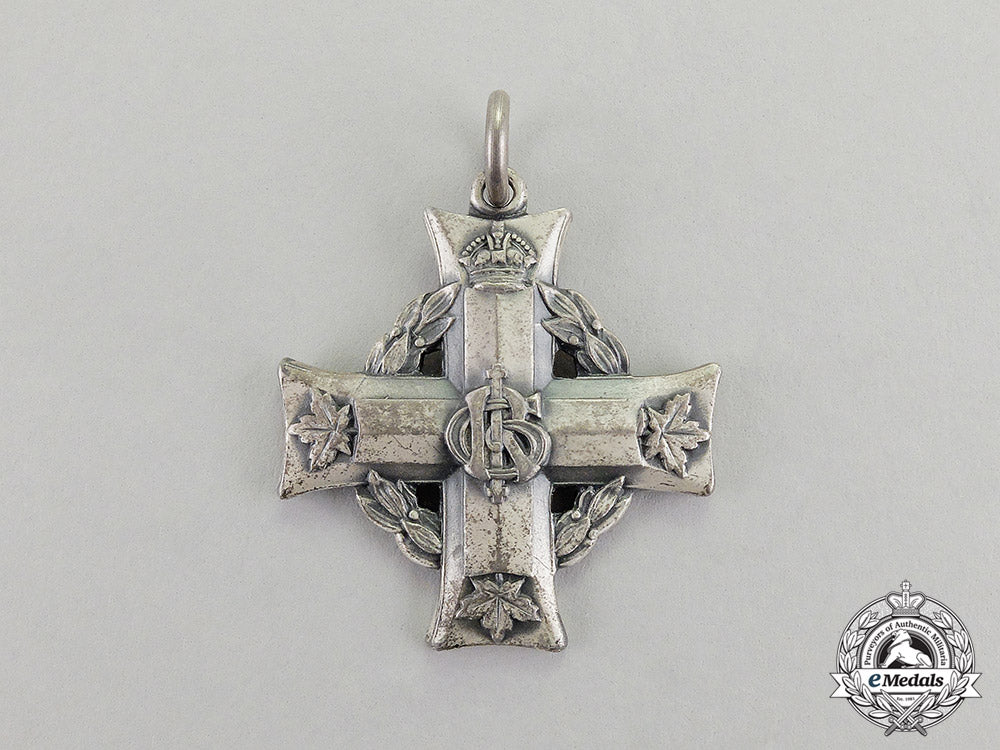
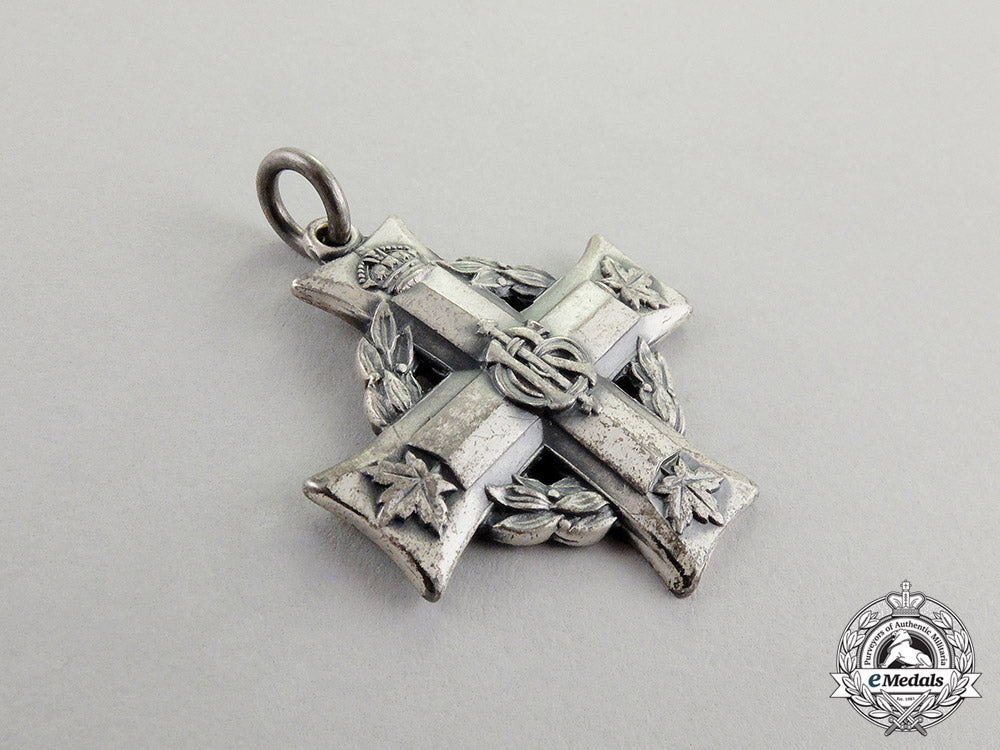
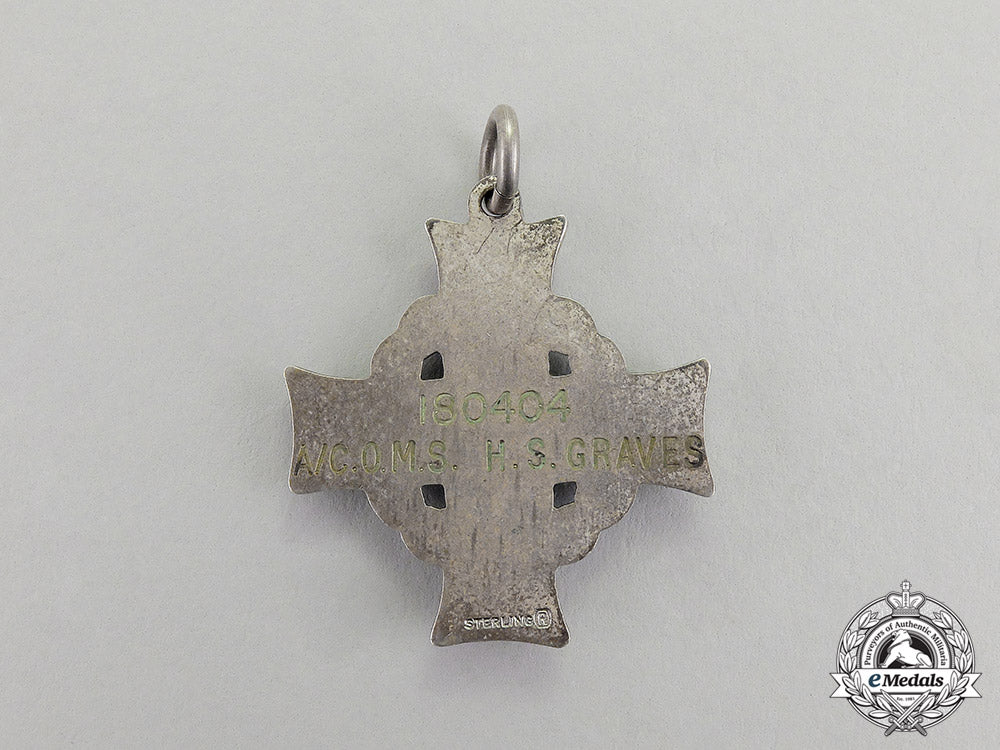
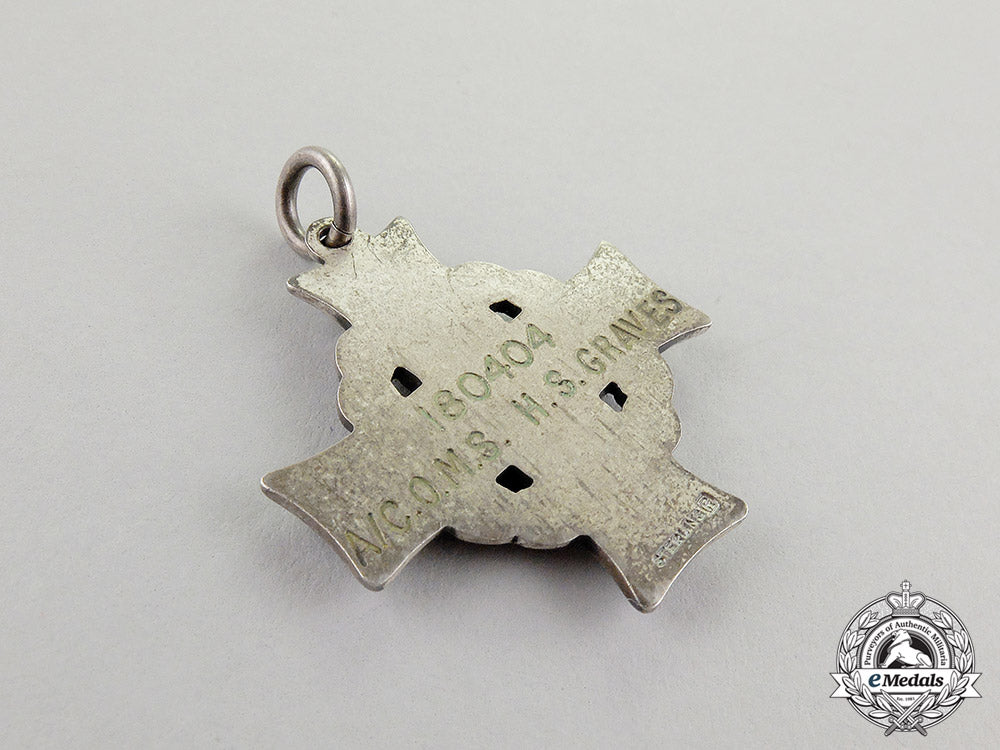
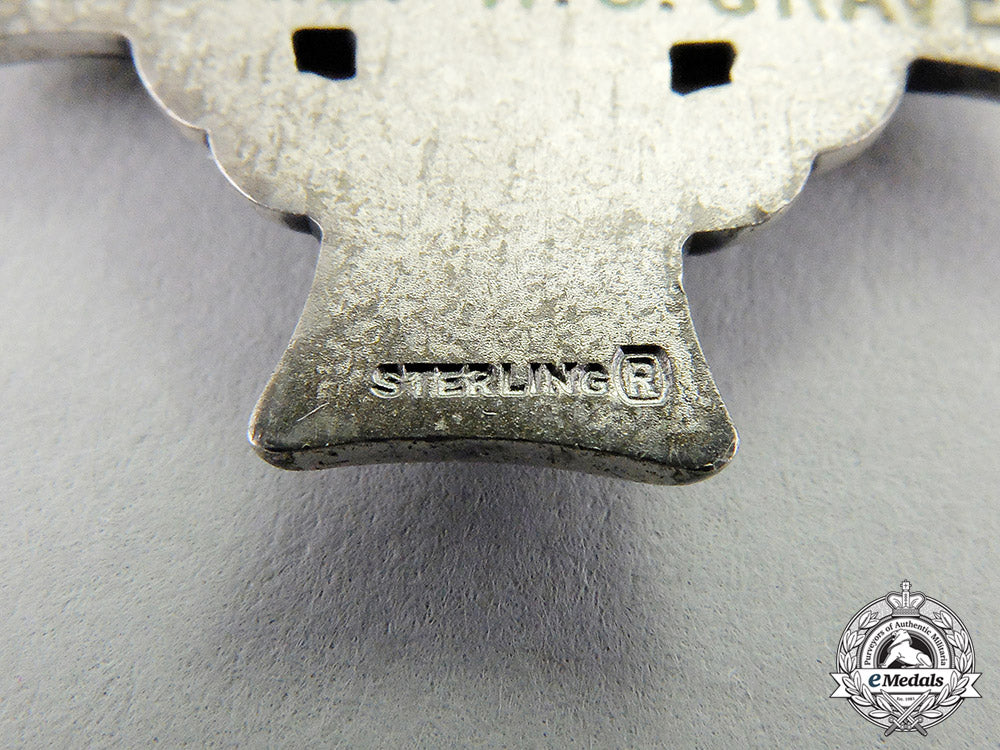
You May Also Like
Japan, Empire. A T90 Civil Defense Helmet, c.1943
W8287
Canada, CEF. A Large Oval Photo
C7175
International. A Lot of Five Medals & Badges
M0685-9
Italy, Kingdom. An Order of St. Maurice and St. Lazarus, c.1900
EU23629
Spain, Kingdom. A Royal and Military Order of St. Hermenegildo, Grand Cross Star, c.1880
EU23630
-
Japan, Empire. A T90 Civil Defense Helmet, c.1943
W8287
Add to CartRegular price $275 USDRegular price $0 USD Sale price $275 USDUnit price / per -
Canada, CEF. A Large Oval Photo
C7175
Add to CartRegular price $120 USDRegular price $0 USD Sale price $120 USDUnit price / per -
International. A Lot of Five Medals & Badges
M0685-9
Add to CartRegular price $200 USDRegular price $0 USD Sale price $200 USDUnit price / per -
Italy, Kingdom. An Order of St. Maurice and St. Lazarus, c.1900
EU23629
Add to CartRegular price $375 USDRegular price $0 USD Sale price $375 USDUnit price / per -
Spain, Kingdom. A Royal and Military Order of St. Hermenegildo, Grand Cross Star, c.1880
EU23630
Add to CartRegular price $685 USDRegular price $0 USD Sale price $685 USDUnit price / per
Do you have a similar item you are interested in selling?
Please complete the form and our client care representatives will contact you.
Sell Item